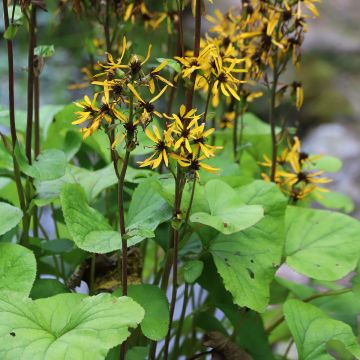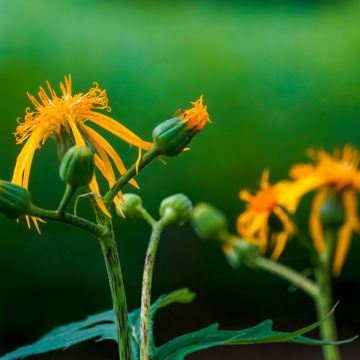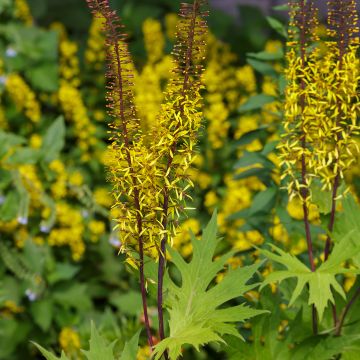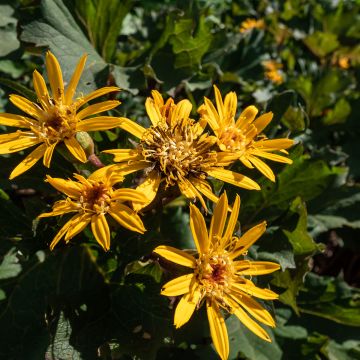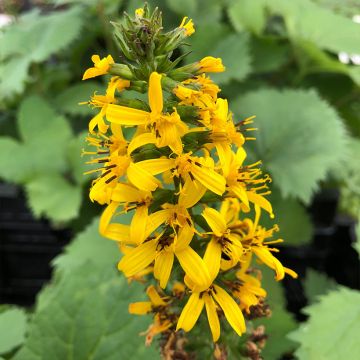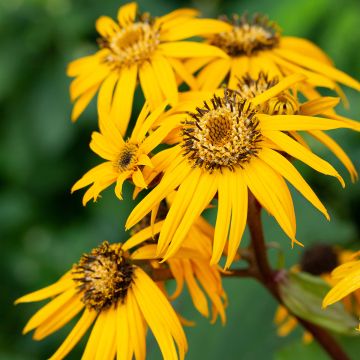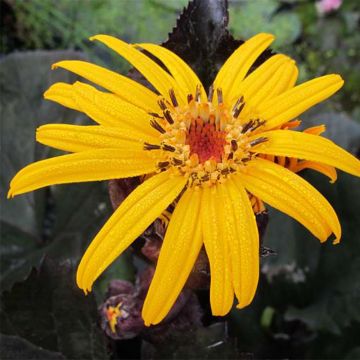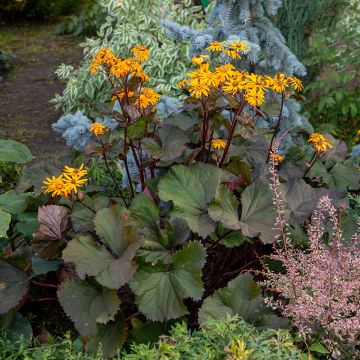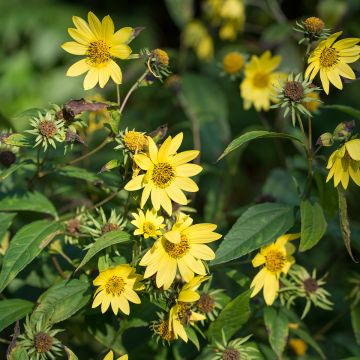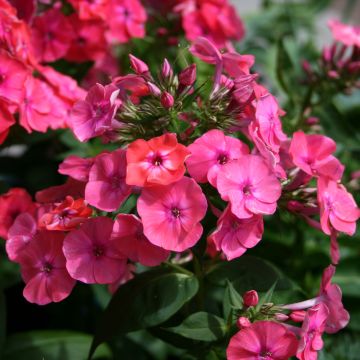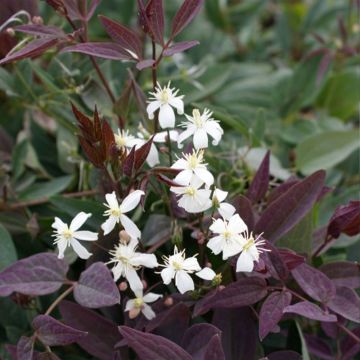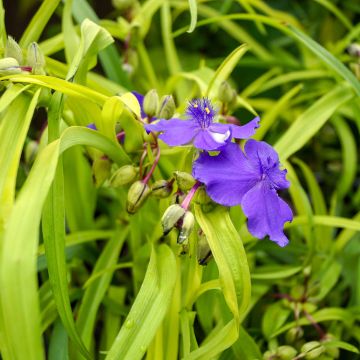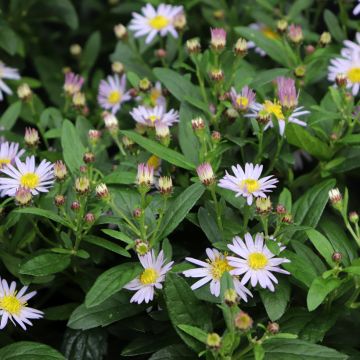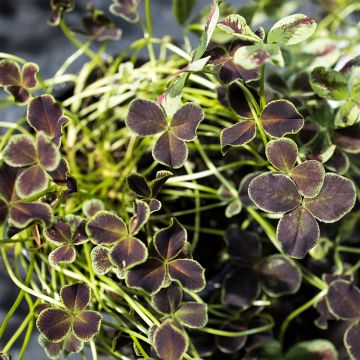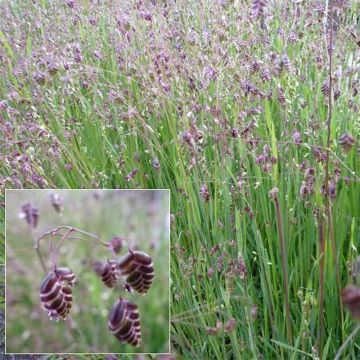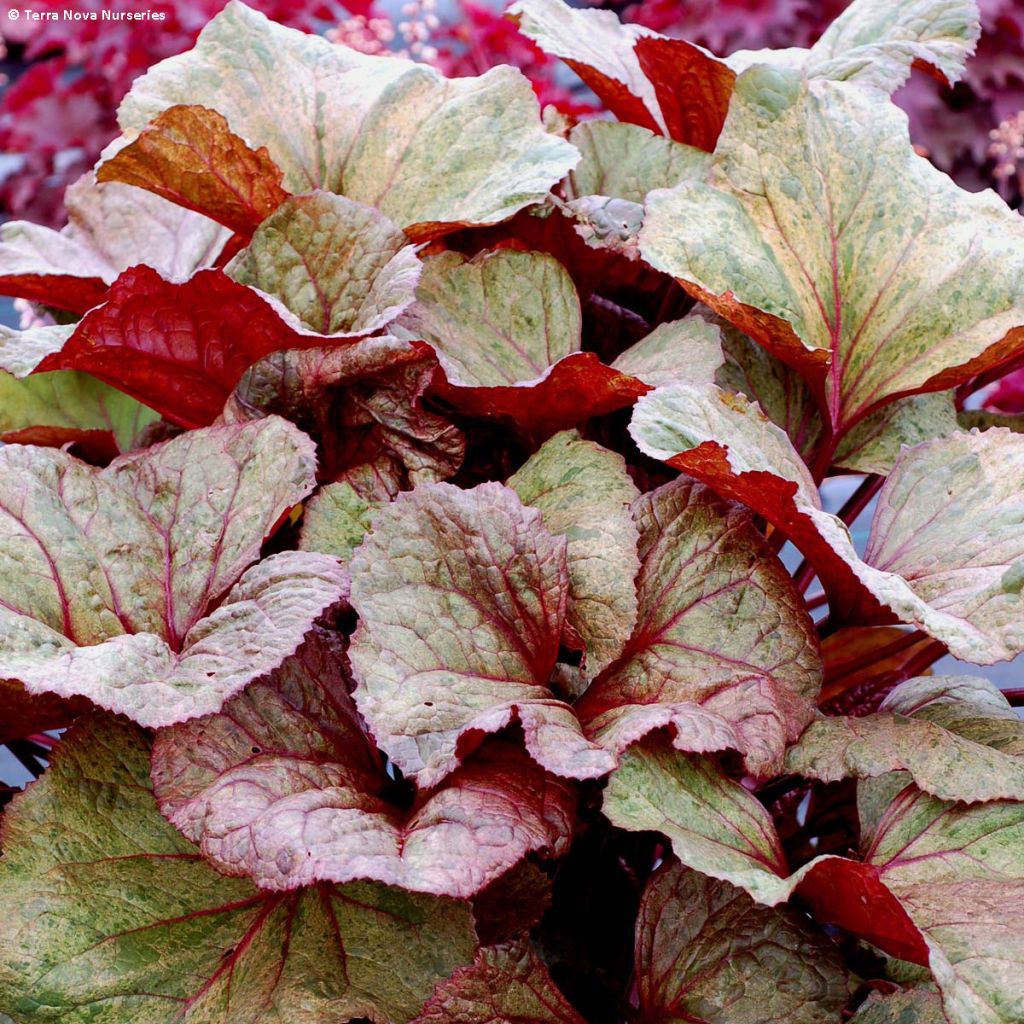

Ligularia dentata Garden Confetti - Leopard Plant
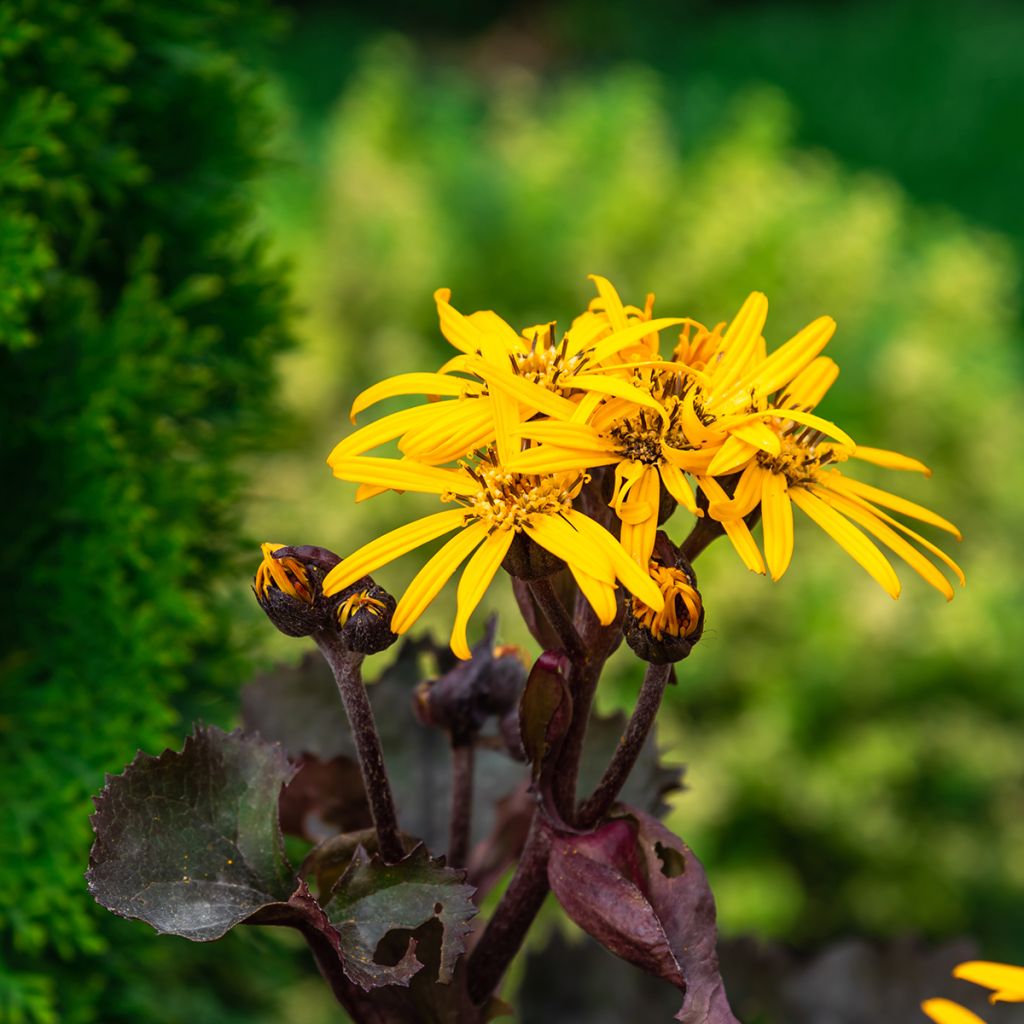

Ligularia dentata Garden Confetti - Leopard Plant
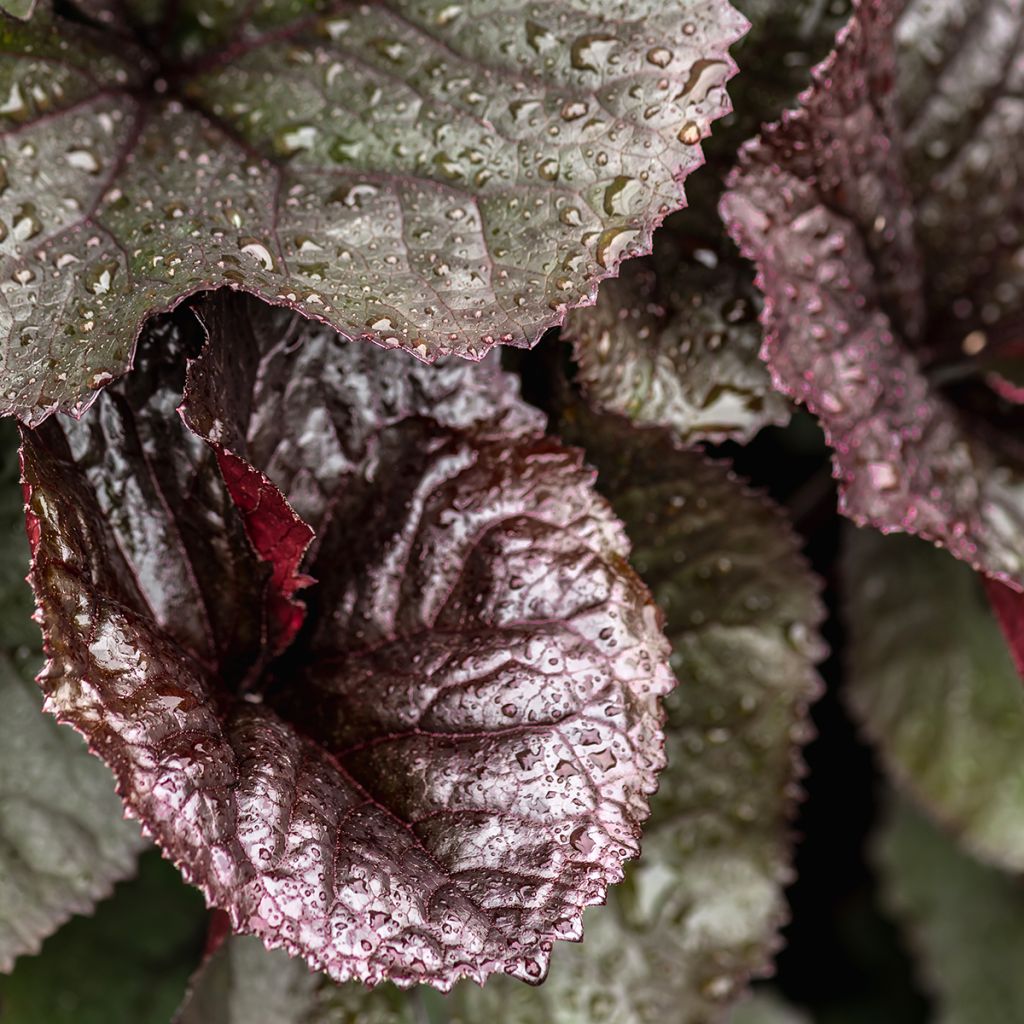

Ligularia dentata Garden Confetti - Leopard Plant
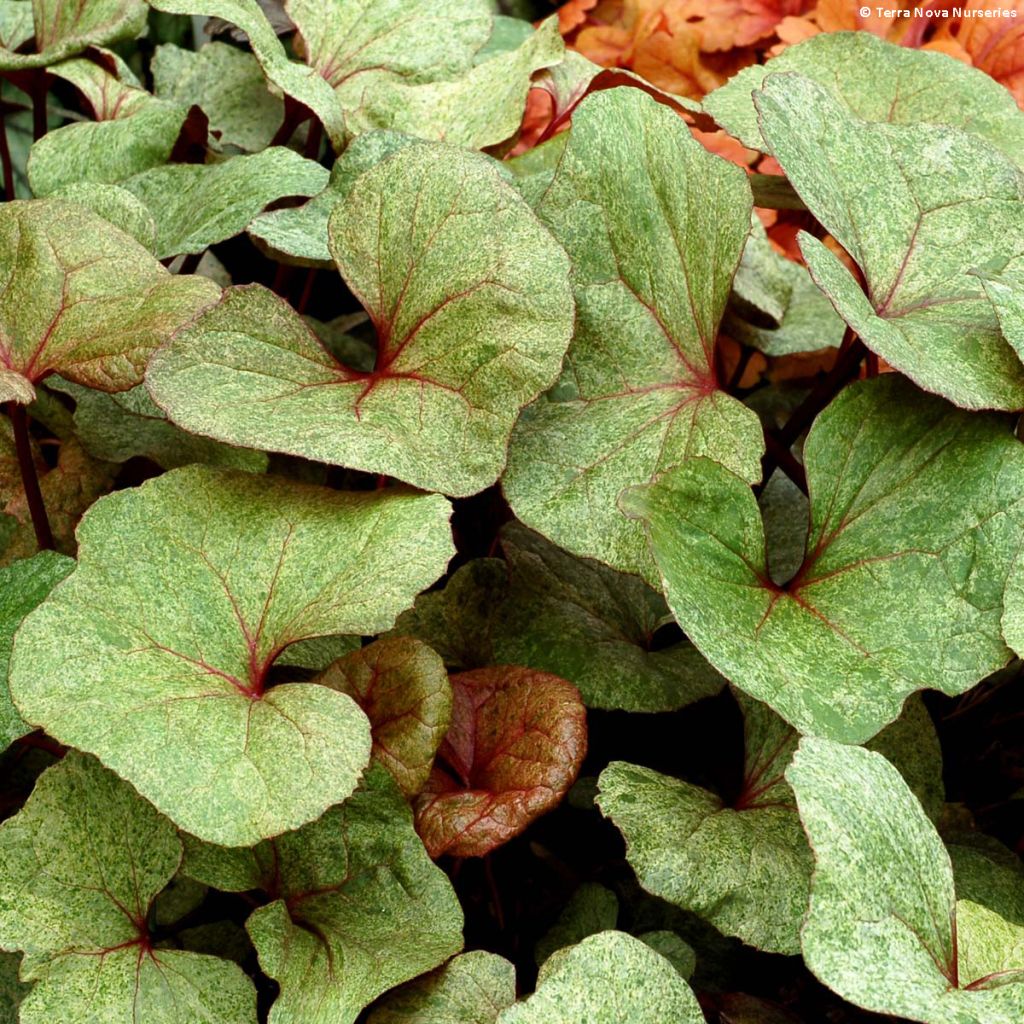

Ligularia dentata Garden Confetti - Leopard Plant
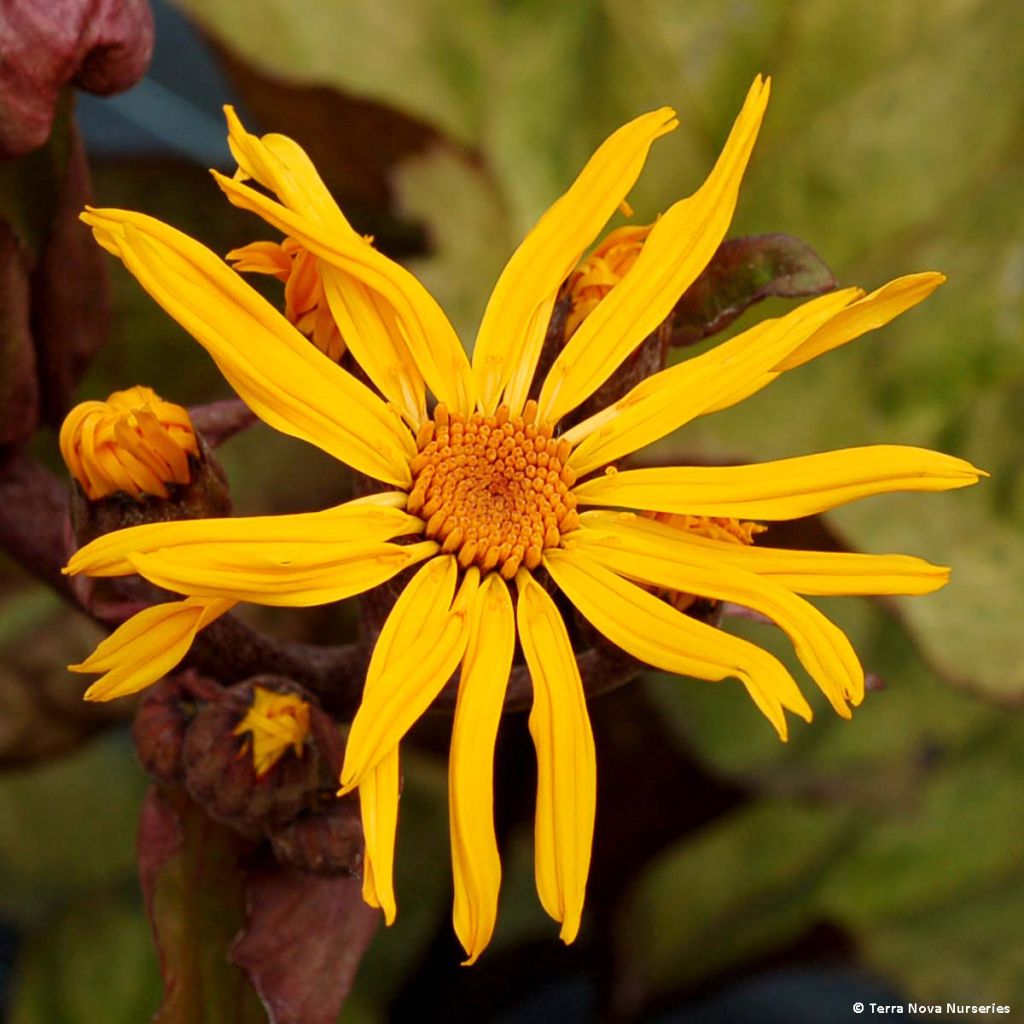

Ligularia dentata Garden Confetti - Leopard Plant
Ligularia dentata Garden Confetti - Leopard Plant
Ligularia dentata Garden Confetti
Leopard Plant
This item cannot be shipped to the selected country
Delivery charge from €5.90
Delivery charge from €5.90
More information
Schedule delivery date,
and select date in basket
This plant carries a 12 months recovery warranty
More information
We guarantee the quality of our plants for a full growing cycle, and will replace at our expense any plant that fails to recover under normal climatic and planting conditions.
From €5.90 for pickup delivery and €6.90 for home delivery
Express home delivery from €8.90.
From €5.90 for pickup delivery and €6.90 for home delivery
Express home delivery from €8.90.
Does this plant fit my garden?
Set up your Plantfit profile →
Description
Ligularia dentata Garden Confetti is a highly decorative cultivar. Its large leaves are spotted or rather splashed with dark green, lime green, cream, and pink. The veins and the underside of the leaf are magenta in colour. Throughout the season, its shades evolve into purple and bronze. This plant, also known as leopard plant, is a tall perennial that deserves a prominent place in gardens. Its spectacular, cordate, rounded, and generous foliage and its fragrant flowers are its greatest assets. It produces lovely star-shaped flowers resembling yellow-orange daisies in the middle of summer, as if placed above its foliage. Ligularia thrives in partial shade and gentle sunlight, where it never lacks water.
Ligularia dentata Garden Confetti belongs to the Asteraceae family. This robust perennial forms a wide, compact tuft of about 80 cm (32in) in height and 90 cm (35in) in width under favourable conditions. Its growth is quite slow. The deciduous foliage emerges in spring and dries up in autumn. The leaves reach 30 cm (12in) in length and are carried by long petioles. They are leathery, cordate at the base, very rounded, with serrated edges. In July and August, large corymbs of bright yellow-orange heads with a brown center, measuring 10 cm (4in) in diameter, bloom at the top of tall, dark purple, branching stems.
Plant Ligularia dentata Garden Confetti in moist, rich, deep, neutral to acidic soil. This plant cannot tolerate water shortage. It adapts well to clay soils if they are humus rich and not waterlogged. Growing vigorously in moist and deep soils, it can cover significant areas. It pairs well with royal ferns, Himalayan blue poppies, loosestrifes, and willowherbs to adorn the edges of water features, for example. It will naturalise well wherever the soil is consistently moist and protected from scorching sunlight.
Report an error about the product description
Flowering
Foliage
Plant habit
Botanical data
Ligularia
dentata
Garden Confetti
Asteraceae
Leopard Plant
Cultivar or hybrid
Other Ligularia
Planting and care
Plant Ligularia dentata Garden Confetti in moist, rich, deep, neutral to acidic soil. This plant does not tolerate a lack of water. It adapts well to clay soils, if they are not waterlogged. Plant this Ligularia in partial shade or in a sunny position, sheltered from strong winds and scorching sunlight. Adding compost at the start of the growing season will promote the growth of this hungry plant. This Ligularia requires little maintenance, a light clearing of the clumps can be done in autumn. Special attention should be paid to frequent attacks by gastropods.
Planting period
Intended location
Care
This item has not been reviewed yet - be the first to leave a review about it.
Summer flowering perennials
Haven't found what you were looking for?
Hardiness is the lowest winter temperature a plant can endure without suffering serious damage or even dying. However, hardiness is affected by location (a sheltered area, such as a patio), protection (winter cover) and soil type (hardiness is improved by well-drained soil).

Photo Sharing Terms & Conditions
In order to encourage gardeners to interact and share their experiences, Promesse de fleurs offers various media enabling content to be uploaded onto its Site - in particular via the ‘Photo sharing’ module.
The User agrees to refrain from:
- Posting any content that is illegal, prejudicial, insulting, racist, inciteful to hatred, revisionist, contrary to public decency, that infringes on privacy or on the privacy rights of third parties, in particular the publicity rights of persons and goods, intellectual property rights, or the right to privacy.
- Submitting content on behalf of a third party;
- Impersonate the identity of a third party and/or publish any personal information about a third party;
In general, the User undertakes to refrain from any unethical behaviour.
All Content (in particular text, comments, files, images, photos, videos, creative works, etc.), which may be subject to property or intellectual property rights, image or other private rights, shall remain the property of the User, subject to the limited rights granted by the terms of the licence granted by Promesse de fleurs as stated below. Users are at liberty to publish or not to publish such Content on the Site, notably via the ‘Photo Sharing’ facility, and accept that this Content shall be made public and freely accessible, notably on the Internet.
Users further acknowledge, undertake to have ,and guarantee that they hold all necessary rights and permissions to publish such material on the Site, in particular with regard to the legislation in force pertaining to any privacy, property, intellectual property, image, or contractual rights, or rights of any other nature. By publishing such Content on the Site, Users acknowledge accepting full liability as publishers of the Content within the meaning of the law, and grant Promesse de fleurs, free of charge, an inclusive, worldwide licence for the said Content for the entire duration of its publication, including all reproduction, representation, up/downloading, displaying, performing, transmission, and storage rights.
Users also grant permission for their name to be linked to the Content and accept that this link may not always be made available.
By engaging in posting material, Users consent to their Content becoming automatically accessible on the Internet, in particular on other sites and/or blogs and/or web pages of the Promesse de fleurs site, including in particular social pages and the Promesse de fleurs catalogue.
Users may secure the removal of entrusted content free of charge by issuing a simple request via our contact form.
The flowering period indicated on our website applies to countries and regions located in USDA zone 8 (France, the United Kingdom, Ireland, the Netherlands, etc.)
It will vary according to where you live:
- In zones 9 to 10 (Italy, Spain, Greece, etc.), flowering will occur about 2 to 4 weeks earlier.
- In zones 6 to 7 (Germany, Poland, Slovenia, and lower mountainous regions), flowering will be delayed by 2 to 3 weeks.
- In zone 5 (Central Europe, Scandinavia), blooming will be delayed by 3 to 5 weeks.
In temperate climates, pruning of spring-flowering shrubs (forsythia, spireas, etc.) should be done just after flowering.
Pruning of summer-flowering shrubs (Indian Lilac, Perovskia, etc.) can be done in winter or spring.
In cold regions as well as with frost-sensitive plants, avoid pruning too early when severe frosts may still occur.
The planting period indicated on our website applies to countries and regions located in USDA zone 8 (France, United Kingdom, Ireland, Netherlands).
It will vary according to where you live:
- In Mediterranean zones (Marseille, Madrid, Milan, etc.), autumn and winter are the best planting periods.
- In continental zones (Strasbourg, Munich, Vienna, etc.), delay planting by 2 to 3 weeks in spring and bring it forward by 2 to 4 weeks in autumn.
- In mountainous regions (the Alps, Pyrenees, Carpathians, etc.), it is best to plant in late spring (May-June) or late summer (August-September).
The harvesting period indicated on our website applies to countries and regions in USDA zone 8 (France, England, Ireland, the Netherlands).
In colder areas (Scandinavia, Poland, Austria...) fruit and vegetable harvests are likely to be delayed by 3-4 weeks.
In warmer areas (Italy, Spain, Greece, etc.), harvesting will probably take place earlier, depending on weather conditions.
The sowing periods indicated on our website apply to countries and regions within USDA Zone 8 (France, UK, Ireland, Netherlands).
In colder areas (Scandinavia, Poland, Austria...), delay any outdoor sowing by 3-4 weeks, or sow under glass.
In warmer climes (Italy, Spain, Greece, etc.), bring outdoor sowing forward by a few weeks.

































